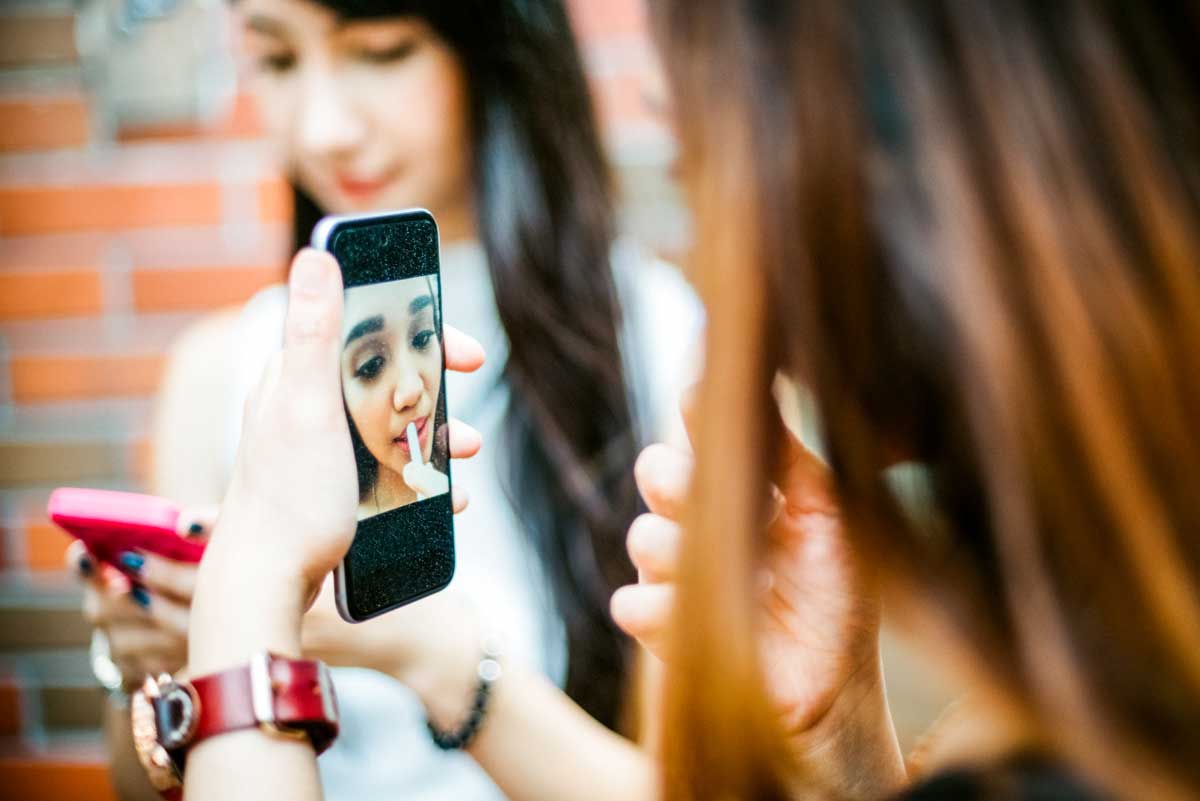
Early adolescents are at a developmental stage when self-consciousness about their bodies and comparisons to their peers are at their peak. Their social media use is also at its peak. Senior Research Scientist Linda Charmaraman, Ph.D., and her team wanted to learn more about how these things intersect.
“Despite the expansive literature on mainstream TV’s effects on young people’s body image, evidence is only emerging on social media’s role in influencing healthy body image,” said Charmaraman, who leads the Youth, Media & Wellbeing Research Lab at the Wellesley Centers for Women. "I am thankful to my undergraduate research assistants who advocated for the significance of this issue and helped shape the design of the study.”
Charmaraman and her team of research scientists and Wellesley College students conducted a cross-sectional pilot survey of 700 middle school students in the northeast U.S., creating a brief measure of social media-related body dissatisfaction. Within the diverse sample comprised of 52% racial/ethnic minorities, 19% of participants reported dissatisfaction with their bodies related to their social media use, with girls reporting this more than boys. Their most common concerns around body image included not being thin enough or attractive enough, and feeling dissatisfied with their body shape, hair, and face.
Those reporting social media-related body dissatisfaction checked their social media more frequently. When compared with those who did not feel negatively about their body image because of social media, those who did had higher rates of depressive symptoms, had online social anxiety, had found it harder to make new friends, and were more socially isolated. Those who followed celebrities checked social media more frequently and were more likely to have depressive symptoms and online social anxiety.
“These results show that there may be negative socioemotional health consequences for early adolescent social media users who are exposed to particular sources of social media content, such as photographs of celebrities,” said Charmaraman. “Knowing this, we can tailor interventions for teens and their families that minimize negative consequences and promote healthy body image while using social media.”
Read more about this study in the Journal of Developmental & Behavioral Pediatrics, in an article co-authored by Charmaraman, WCW Research Associate Amanda Richer, M.A., Cindy Liu, Ph.D., Alicia Doyle Lynch, Ph.D., and Megan A. Moreno, M.D., M.S.Ed., M.P.H. (You can also watch the video abstract.)
The study was funded by Children and Screens: Institute of Digital Media and Child Development, with additional support provided by the National Institutes of Health and the Mary Ann Tynan Faculty Fellowship to Dr. Liu, as well as the Class of 1967 Internship Program at the Wellesley Centers for Women.
February 24, 2021

